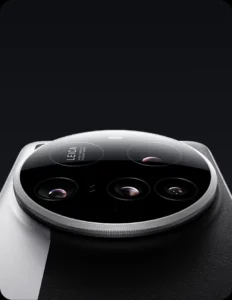Xiaomi 15 Ultra vs Samsung S25 Ultra: A Detailed Comparison
Xiaomi 15 Ultra vs Samsung S25 Ultra: A Detailed Comparison
In the ever-evolving landscape of flagship smartphones, two devices have recently captured significant attention: the Xiaomi 15 Ultra and the Samsung Galaxy S25 Ultra. Both models showcase the pinnacle of technological advancement, each bringing unique features and innovations to the table. This comprehensive comparison delves into various aspects of both smartphones to assist you in making an informed decision.
Xiaomi 15 Ultra vs Samsung S25 Ultra: Design and Build Quality
The Xiaomi 15 Ultra and the Samsung Galaxy S25 Ultra both exude premium aesthetics. The Xiaomi 15 Ultra features a sleek design with a glass back and metal frame, measuring 161.3 mm in height, 75.3 mm in width, and 9.35 mm in thickness, and weighing 226 grams. It boasts a 90% screen-to-body ratio, offering an immersive viewing experience.
The Samsung Galaxy S25 Ultra, slightly taller and wider, measures 162.8 mm in height, 77.6 mm in width, and 8.2 mm in thickness, weighing 218 grams. It offers a higher screen-to-body ratio of 92.4%, providing an expansive display. Both devices are IP68 certified, ensuring resistance to dust and water, and are constructed with high-quality materials, including metal frames and glass backs.
Display quality is paramount in flagship smartphones, and both devices deliver exceptional visuals. The Xiaomi 15 Ultra features a 6.73-inch AMOLED display with a resolution of 1440 x 3200 pixels, resulting in a pixel density of 522 ppi. It supports a 120 Hz refresh rate with adaptive capabilities ranging from 1 to 120 Hz, ensuring smooth scrolling and responsiveness. The display achieves a peak brightness of 1603 nits, offering excellent visibility even under direct sunlight.
The Samsung Galaxy S25 Ultra, on the other hand, boasts a larger 6.9-inch Dynamic AMOLED display with a resolution of 1440 x 3120 pixels and a pixel density of 498 ppi. It also supports a 120 Hz adaptive refresh rate and achieves a peak brightness of 1429 nits. Both displays support HDR content, providing vibrant colors and deep contrasts. NanoReview
Performance
Under the hood, both smartphones are powered by the Qualcomm Snapdragon 8 Elite processor, fabricated on a 3-nanometer process. The Xiaomi 15 Ultra’s CPU configuration includes 2 high-performance cores clocked at 4.32 GHz and 6 efficiency cores at 3.53 GHz. Similarly, the Samsung Galaxy S25 Ultra’s CPU mirrors this configuration. In benchmark tests, the Galaxy S25 Ultra slightly edges out with a Geekbench 6 single-core score of 3147 compared to the Xiaomi 15 Ultra’s 3008. In multi-core performance, the Galaxy S25 Ultra scores 9750, surpassing the Xiaomi 15 Ultra’s 9065. Both devices offer configurations with 12 GB or 16 GB of LPDDR5X RAM and storage options ranging from 256 GB to 1 TB, utilizing UFS 4.0 technology for swift data access.
Camera System
The camera capabilities of these devices are standout features. The Xiaomi 15 Ultra sports a quad-camera setup co-engineered with Leica, comprising a 50 MP wide-angle lens with an aperture of f/1.6, a 50 MP telephoto lens with an aperture of f/1.8 offering 3x optical zoom, a 200 MP ultra-telephoto lens with an aperture of f/2.6, and a 50 MP ultra-wide lens with an aperture of f/2.2. This setup provides versatility in capturing various scenes with high clarity.
The Samsung Galaxy S25 Ultra features a 200 MP wide-angle lens with an aperture of f/1.7, a 50 MP telephoto lens with an aperture of f/3.4 offering 5x optical zoom, a 12 MP telephoto lens, and a 50 MP ultra-wide lens with an aperture of f/1.9. Both devices support 8K video recording at 30 fps and 4K recording at 120 fps. The Xiaomi 15 Ultra’s collaboration with Leica enhances its photographic capabilities, offering features like Bokeh mode, Pro mode, and RAW support.
Battery Life
Battery performance is a critical factor for users. The Xiaomi 15 Ultra is equipped with a 5410 mAh battery, supporting 90 W wired charging and 80 W wireless charging, capable of charging from 0 to 72% in 30 minutes. In battery life tests, it achieves approximately 30 hours and 3 minutes of general usage.
The Samsung Galaxy S25 Ultra houses a 5000 mAh battery, supporting 45 W wired charging and 25 W wireless charging, also capable of charging from 0 to 72% in 30 minutes. It offers a slightly longer battery life of about 31 hours and 10 minutes in general usage. NanoReview
Software and Features
The Xiaomi 15 Ultra operates on HyperOS 2.0, based on Android 15, introducing several AI features, although accessing these requires a Xiaomi account. The user interface offers customization options, but some pre-installed apps cannot be removed.
The Samsung Galaxy S25 Ultra runs on One UI 7.0, also based on Android 15, providing a polished and user-friendly experience with extended software support.
Conclusion
Both the Xiaomi 15 Ultra and the Samsung Galaxy S25 Ultra represent the zenith of smartphone innovation, each with its unique strengths. The Xiaomi 15 Ultra stands out with its Leica-engineered camera system and faster charging capabilities, making it an excellent choice for photography enthusiasts and users seeking quick battery replenishment.

